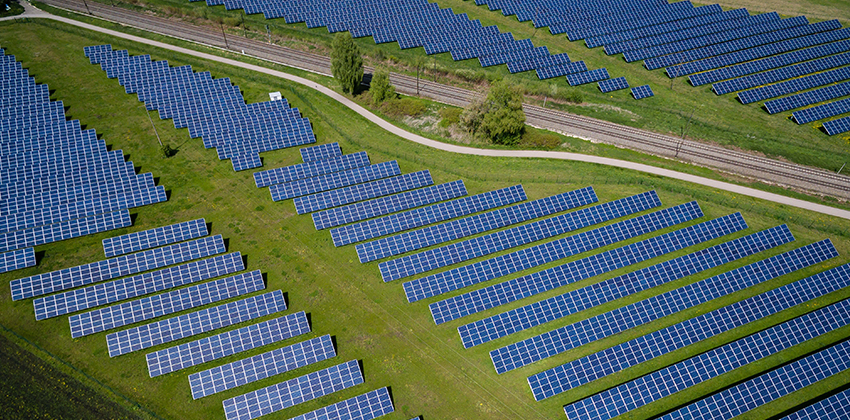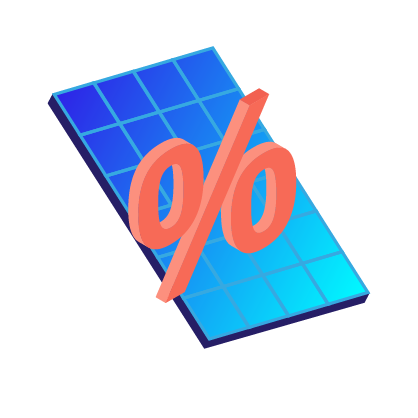See how much solar panels cost in your area

Please enter a valid zip code.
Zero Upfront Cost
Best Price Guaranteed
![]()
![]()
Solar Learning Center > Solar Panels for Home > Community Solar
Community Solar

It’s no secret that many of us spend a large portion of our income on energy and electricity bills. In fact, in 2012 we spent around $3,052 per person on energy and we have only found our electricity rates and expenses increasing these past few years – even if we are taking measures to reduce our carbon footprints and energy consumption. This conundrum can have many of us wondering what we can do to save a little money and help the environment in the process.
While solar can be the perfect solution for high energy bills for many homeowners, rooftop PV isn’t feasible for a number of us due to space constraints, renting, zoning, and roof types. Thankfully, there’s a new solar power option that we can be tapping into to reduce our reliance on coal and fossil fuels while reclaiming our budgets: community solar.
What is Community Solar?
Community solar is a renewable energy option that allows more than one home to share the benefits of solar energy. This system arranges it so people who wouldn’t normally be able to use solar energy can share the resources of a renewable solar energy plant. Typically, a community solar project is located on public or a multi-owned property and is an easy way for neighbors to generate local solar energy power.
Community solar is becoming a feasible option for many, because of the expanding solar industry and cost-effective solar products that are now on the market. This type of cooperative agreement allows a group of individuals who would be unable to go solar on their own to pool their resources together and fund a viable green solar solution. Sharing solar power allows multiple participants to receive or lease power from one solar array. As more communities and residents plug into this newer and cleaner energy alternative, this concept appears to be gaining in popularity.
Quick Community Solar Facts
Here’s a quick rundown of some interesting facts and statistics:
We expect to see 3 gigawatts of solar power in the next few years which is astounding when we compare it to the 66 megawatts added in 2014.
Currently there are 26 states with established community solar projects.
14 states and the District of Columbia recognize and encourage shared renewable energy.
Why Choose Community Solar?
According to the National Renewable Energy Laboratory, in a published report called “Shared Solar: Current Landscape, Market Potential, and the Impact of Federal Securities Regulation”, 49 percent of households and 48 percent of businesses can’t harness solar energy, because they either rent or lack adequate roof space. Often, solar power is also unattainable for a variety of other reasons, such as: unsuitable space, too much shade, living in condo buildings, zoning, previously installed equipment on the roof, and more. Community solar arrangements are the answer to these modern dilemmas and give people the ability to power communities with renewable energy while providing measurable financial benefits.
Besides providing an affordable, clean, and sustainable energy source to American families and businesses, it is believed that solar power companies and products have actually produced more jobs per unit when compared to other renewable energies and even fossil fuels. The numbers are in, the Solar Foundation, over 260,000 workers make up the solar power industry’s workforce.
Besides generating employment and career opportunities, renewable energy provides a significant savings cost to its users. While this is great for our pocket books, we also need to look at the harm to the environment that is prevented by choosing these power sources.
Looking Ahead…
In today’s world, we need to look for affordable and realistic ways to reduce our carbon footprints while eliminating the need for outdated fossil fuels. Community solar is something that more and more people will be considering. We can use the power of the sun to fulfill the same services without a big cost to us, the planet, and future generations.
Related Articles
Community Solar Farms Gaining Popularity in New York
According to the Solar Energy Industries Association, by the end of 2018, there should be close to 2 million solar installations in the United States....
What Is A Solar Panel Farm?
Each year, there are newer and more powerful solar technologies made available for individuals and consumers. These solar solutions are not just limited to rooftop...
See how much solar panels cost in your area.

Please enter a valid zip code.

Please enter a valid zip code.
Zero Upfront Cost. Best Price Guaranteed.








